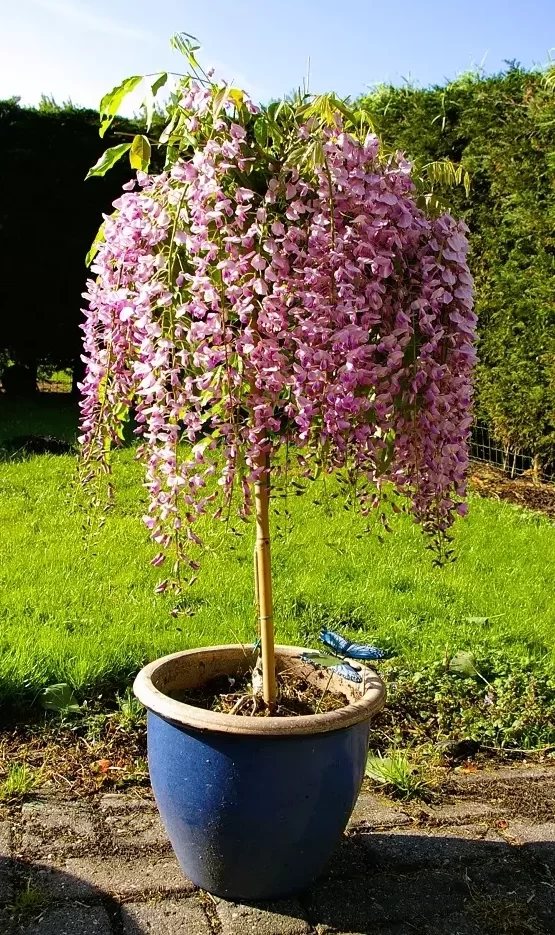It is a climbing shrub that winds around tall trees or other high objects, easily reaching a height of 20 to 25 metres. The Wisteria is native to the Far East, mainly China, Japan and Korea. That is about 1000 years ago. The first Chinese Wisteria was brought to Europe in the early 19th century by Emil Bretschneider. During his trip to China he became interested in Chinese flora and when he returned to Europe he published ‘History of European Botanical Discoveries in China’. The first blooming Wisteria in Europe was in Britain in 1819. Suddenly, the Wisteria was extremely popular and has been found all over the world since then. White varieties arrived in Europe around 1850 and the Japanese Wisteria followed a few years later.

The Wisteria is incredibly versatile. The most well-known applications are on pergolas, walls and fences, but they also do very well in a pot in the smaller garden, balcony or terrace. For this, the special Wisterias are grown on a stem. In the Netherlands, the Wisteria is called ‘Blue rain’. It really does justice to that name on the stem, because you really see a waterfall of blue flower clusters.
Flowering time varies slightly by species, but generally takes place in May/June. Most Wisteria species flower on two-year wood, which means that they will only flower after two or three years. It is a winter hardy, but deciduous plant.
Varieties of Wisteria
There are quite a few varieties of Wisterias. The most famous are:
- Wisteria sinensis: The Chinese Wisteria grows counterclockwise. The botanical name in China is Zi Teng, which means ‘violet vine’.
- Wisteria floribunda: The Japanese Wisteria: grows clockwise. Known in Japan as Fuji, named after one of the islands.
- Wisteria frutescens: The American Wisteria: The Amethyst Falls in particular is a well-known species. What is striking about this somewhat smaller Wisteria is that it already flowers the first year. The plant does not produce seed.
- Wisteria formosa: This is a cross between sinensis and floribunda. Recognizable by the fact that they grow in both counterclockwise and clockwise directions.
- Wisteria macrostachya: Also called Kentucky Wisteria, the name of the state in the east of the USA where it originates. This species is considered to be a variety of Wisteria frutescens. The difference is that it grows slightly differently and has a scent similar to that of grapes.
